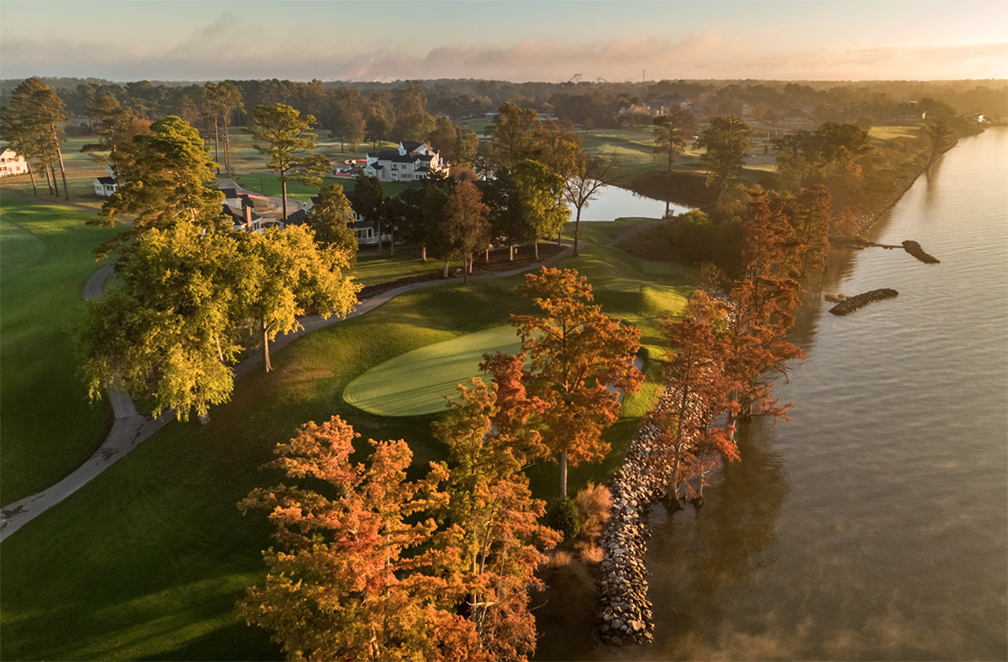
Kingsmill Resort
When one thinks of Williamsburg, Virginia, the first thing that comes to mind is its role in the colonization of North America by the English, which led to the eventual forming of the United States.
The settlement, situated on high ground on the Virginia Peninsula, was a handy starting point for westward movement up the isthmus separating the York and James Rivers as they run east to Chesapeake Bay.
Today, Williamsburg is a hotbed for tourism, with Colonial Williamsburg – a restored section of the city – attracting more than four million visitors a year as part of the area’s Historic Triangle that also includes Jamestown and Yorktown.
Williamsburg, founded in 1632, is essentially a living museum, depicting the lifestyles and culture of the colonial period in American history.
In the 20th Century, the city spawned upscale suburban communities for Richmond (to the northwest) and Norfolk (to the southeast). With both tourism and residential relevance, the area became a haven for outstanding golf.
Most notable among the venues is the Golden Horseshoe Golf Club, whose famed Gold course is literally across the street from Colonial Williamsburg, and the Kingsmill Resort, a three-course facility steeped in honored traditions and genuine Southern hospitality.
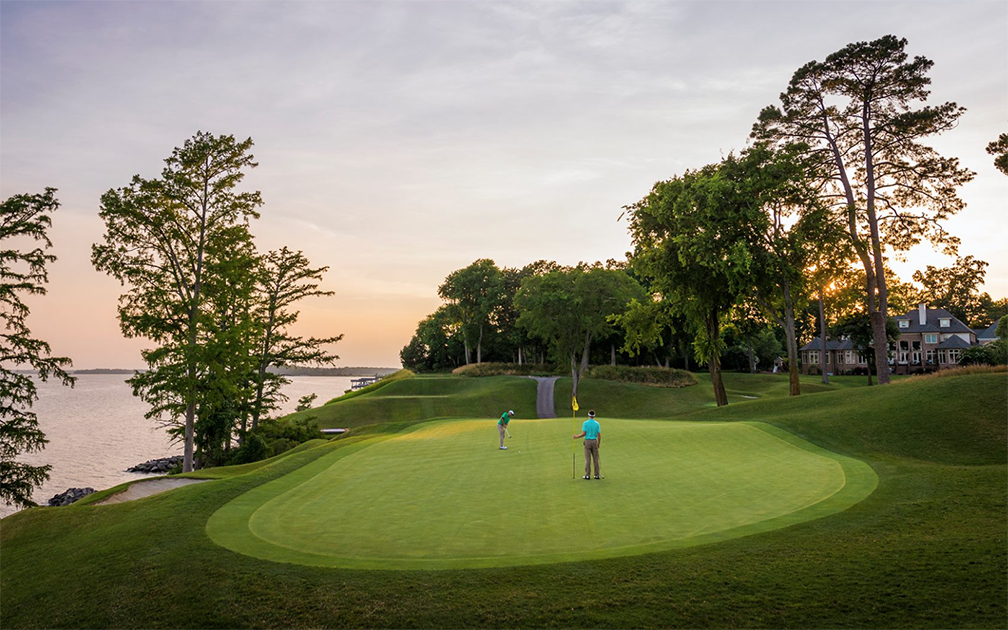
Kingsmill Resort
Kingsmill Resort, where luxury and golf meet in splendid isolation
Just south of the city proper on Cobham Bay and within a short drive of historic Jamestown, site of the first English settlement in what would become the United States, is Kingsmill Resort.
The resort and its 54 holes of golf were originally developed by Anheuser-Busch as part of a 3,900-acre tract it acquired in 1969. Portions of the resort are bordered by an A-B brewery and the world-famous Busch Gardens amusement park. Texas-based Escalante Golf acquired Kingsmill Resort in the spring of 2017.
Kingsmill and its three golf courses – designed by Pete Dye, Arnold Palmer, and Tom Clark/Curtis Strange, respectively – occupy gently rolling hills and hardwood forests along James River.
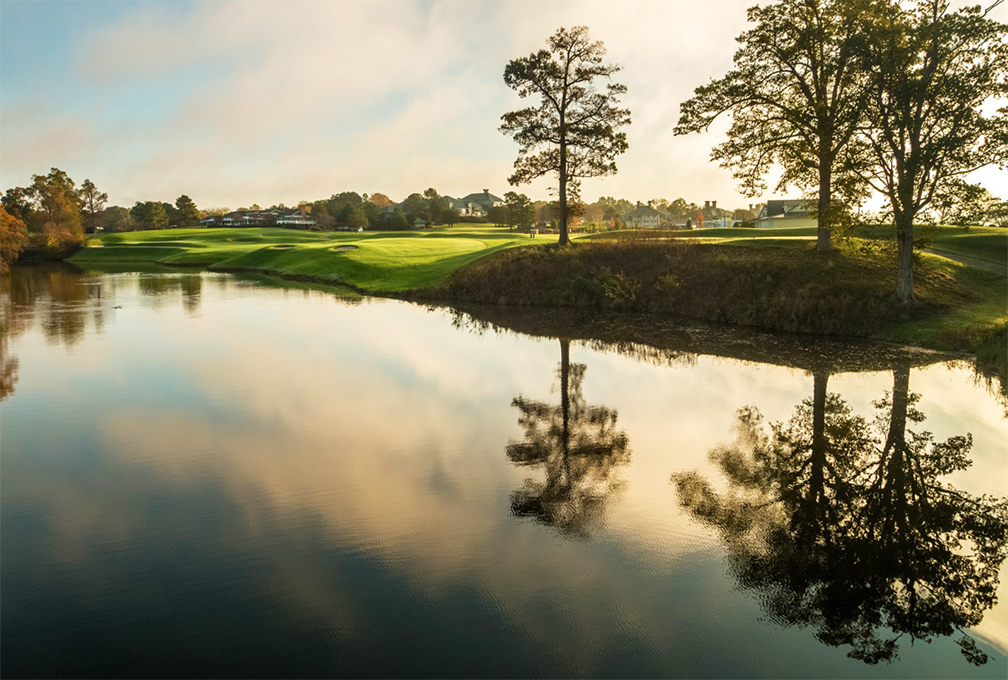
Kingsmill Resort
Down to the river
Bordered by the calm waters of the James, the Dye-designed River Course is a championship track that served as a popular PGA Tour site for 22 years and is the current home of the Pure Silk Championship presented by Visit Williamsburg on the LPGA Tour.
Dye signatures abound on the 6,831-yard par-71 layout, with devilish twists and turns, uphill approaches to match every downhill drive and greens with plenty of movement. There’s not a single hole on the River Course that will accept a run-up approach as many of the putting surfaces are elevated and some sit high above deep ravines so thick with rough any wayward shot turns into a lost-ball situation.
Here the player will find superbly conditioned fairways and greens and natural areas planted with shrubs and small patches of sawgrass. Residential housing is evident on most holes but, with the exception of Nos. 10 and 11, is well back of the playing areas, allowing for a sense of serenity.
Despite its moniker, only three of the River Course‘s holes — the final stretch at Nos. 16, 17 and 18 — have the James in view. The majority of the routing winds over and through a beautiful countryside with meandering creeks, ponds and majestic pines, oaks and cedar.
River Course opened in 1975 and was renovated in 2005 by Dye, who brought out the subtle details that make for a truly unforgettable round of golf, earning it a spot as one of Golfweek Magazine‘s top-10 courses in Virginia.
Plantation Course is routed on hallowed grounds
Kingsmill Resort’s Plantation Course is routed across what was once the original Kingsmill Plantation. Landmarks from Richard Kingsmill’s 1736 plantation pepper the grounds, making a round here feel like an American history lesson.
Palmer and longtime partner Ed Seay created a venue that is both challenging for low-handicappers while accessible for women and senior players; in fact, Golf Digest has cited the Plantation course as one of its top-10 courses for women.
The track features a 6,437-yard par-72 routing through towering forests, along deep ravines and streams and ponds entering play on eight holes.
Strong iron play and a steady putter will be rewarded at Plantation, whose green complexes are not excessively punitive. But you’ll need to be on the correct side of the hole to have a measure of success. Plantation‘s fairways, though tree-lined for the most part, are wide enough to accommodate an occasional wayward shot.
The Plantation Course‘s toughest stretch is the 421-yard, dogleg-right 10th, the 434-yard uphill 11th and the short, 460-yard par-5 12th, which is crossed near the green by a water-filled trough. All are toughened by fairways that roll down and up and then down again. Getting through this three-hole stretch with pars will help the round. It’s a fun yet difficult design that golfers tend to love.
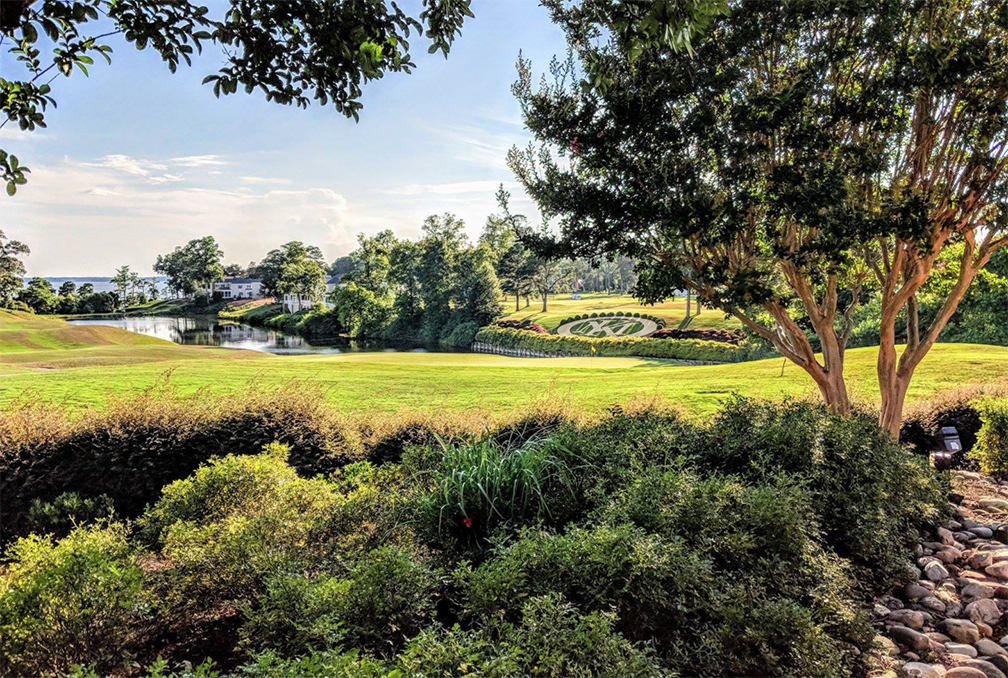
Kingsmill Resort
Woods Course offers pleasing mix of challenges
Kingsmill Resort’s Woods Course – which is set up the road from the rest of the resort – was co-designed by two-time U.S. Open champion Strange and golf architect Clark. The duo created a parkland-style course in a serene, secluded corner where players will find themselves using every club in the bag while playing the pleasing mix of holes.
No housing mars this visually impressive, 6,659-yard par-72 layout – which opened in 1995 – and none is planned. The Woods Course is open to full golf and national golf members and their guests only.
Woods hits the golfer straight in the mouth on the 457-yard, par-4 third hole, a slight dogleg-right around a small lake. The 316-yard par-4 fourth can be challenged from the tee, but the wide green is fronted left by sand and right by water, so be prepared to do the time if you do the crime.
The back nine winds through a thick forest and the course’s signature hole may be the 184-yard, par-3 12th, which ends on a double-green shared with No. 15. A bunker splits the two halves of the huge putting surface, which is dramatically lower on the No. 12 side. A pond with cattails and aquatic plants protect the greens complex.
The course concludes with a tough 453-yard par-4 that is fairly open. The putting surface, surrounded on three sides by sand but open at the front, sits behind a pond that also guards the ninth green.
Clark and Strange have fashioned a track at Kingsmill that is both challenging and fair. Woods is certainly isolated and it’s very pretty.
The Woods Course is considered the hardest at Kingsmill. The newest of resort’s tracks, it immediately garnered stellar reviews from golf publications, rating services and players; Zagat Survey has rated it as one of America’s Top Golf Courses.
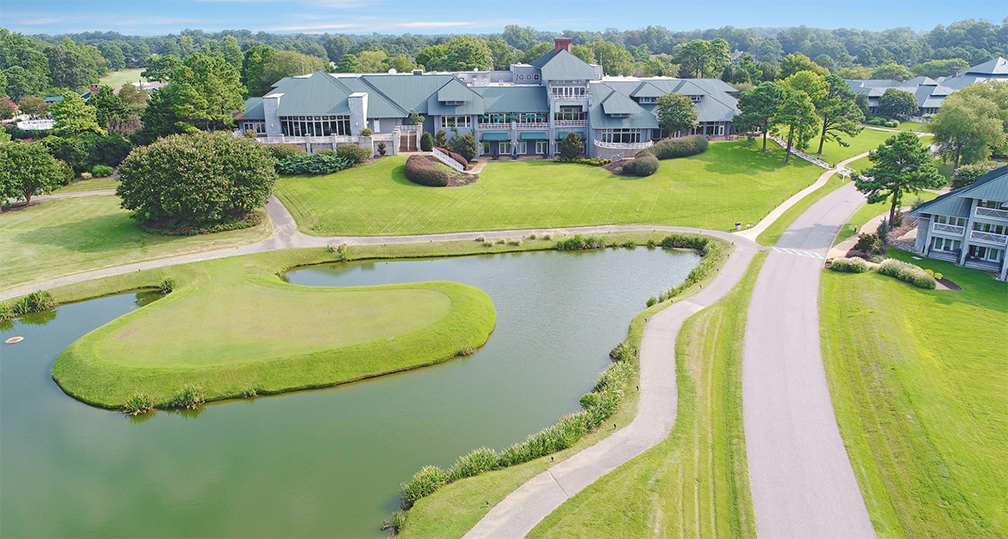
Golf at Golden Horseshoe is, ahem, pure gold
Golden Horseshoe’s name derives from an episode in American colonial history. In 1716, Colonial Governor Alexander Spotswood led a small group of men over the Blue Ridge Mountains and into the Shenandoah Valley on an expedition. The journey’s survivors received a horseshoe made of gold.
While a trip around the facility’s 45 holes is not as dangerous or as arduous as a colonial expedition, the challenges of the three layouts here are varied and ample.
The courses – the Gold, the Green and nine-hole Spotswood – feel like they were etched into the thick forests, hilly terrain and ravines. There’s not a house in sight. Designed by Robert Trent Jones Sr. and his son Rees Jones, respectively, Gold and Green have received top ratings, including Golf Magazine‘s Gold Medal Award, 4½ stars in Golf Digest, and a listing in the Zagat Survey as one of “America’s Top Golf Courses.” This is core golf at its finest and, because of the Golden Horseshoe’s commitment to the environment, all the courses have been designated Audubon sanctuaries.
Gold is the granddaddy and one of the senior Jones’ best designs. Opened in 1963, the Jones, Sr.-designed, par-71 Gold has been considered one of the master architect’s top courses. Extending 6,817 yards from the back set of four tees, the bucolic layout demands length off the tee, course management and a heaping helping of guts. The course was later renovated in 2017 by Rees Jones.
Jones himself called it his “finest design.” The narrow fairways contain sloped landing areas before ending at tiny, tilting putting surfaces. Seven holes play across water hazards or ponds, including the downhill, 169-yard par-3 16th, notable as one of golf’s first island greens.
Other fine one-shotters at Gold include the 201-yard third, which plays downhill over water to a diagonal green; the 206-yard seventh with its perched putting surface; and the knee-knocking, 188-yard 12th, a cape design with a green that slopes back toward water.
The course also features a two short par-4s on the front nine, the 348-yard fifth and 337-yard eighth, both of which require strategy over brawn. Gold’s 435-yard par-4 17th is listed with its 16th in Golf Magazine’s “Top 500 Golf Holes in the World”.
The bottom line is that the course requires precision and power, offering a spectacular setting with many risk/reward decisions. It is an outstanding example of traditional golf course architecture.
Green Course is longer, more forgiving
Rees Jones crafted Golden Horseshoe’s Green Course, which opened in 1991 and gave the club a terrific one-two punch. Green follows the same terrain as Gold, but it’s longer and not as relentless as it rolls along ridges and across ravines within a mature forest.
“The real quality of this course is in its framing,” Rees Jones said. “We wanted to complement the Gold but to give guests a little variety. We also wanted to make it a little more forgiving.”
Green is a shot-maker’s delight, allowing players several options, and is very rugged and isolated as it plays through huge trees, primarily beech, oak and pines.
Located a mile and a half from Gold, Green has its own clubhouse. The par-72 measures 7,120 yards from the tips. Water enters play on six holes, with four others bordered by lateral hazards.
Green’s par-3s are not as penal as Gold’s, but the 195-yard downhill 11th — with a tee shot over water to an amphitheater green framed by four bunkers at the rear — might be the best one-shot hole at the Golden Horseshoe. Green has been rated at 4½ stars out of five by Golf Digest. It’s tough enough to have served as the site of the 2004 U.S Women’s Public Links Championship.
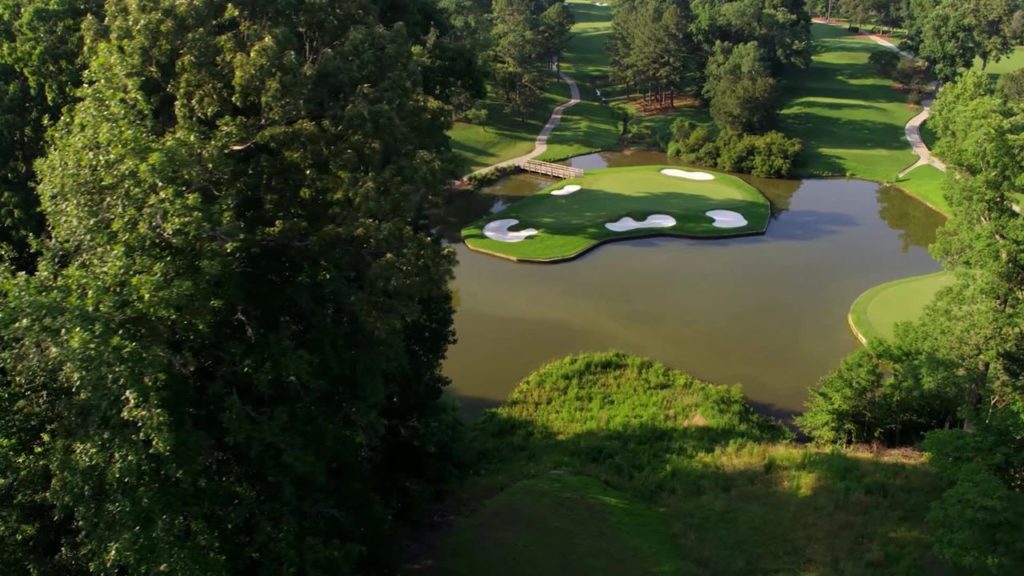
Golden Horseshoe
Spotswood is less intense
Colonial Governor Spotswood is the namesake of this course, a tricky Jones Sr.-crafted, nine-hole executive layout adjacent to Gold. With six par-3s, two par-4s, and a par-5, the layout is an updated version of the Williamsburg Inn’s original 1947 nine-hole course.
Spotswood is just right for practicing one’s short game and a welcome reprieve from the rigors of Gold and Green. But it’s no afterthought, with Golf Magazine calling it the “best short nine-hole course in the country,” and Golf Range Magazine considering it one of the “Top Short Courses in America.”
In addition to its 45 splendid golf holes, Golden Horseshoe Golf Club boasts two restaurants as well as access to recreation, dining, spa, hotel options and other amenities – making it an ideal destination for a lengthy stay.
Recommendation
Williamsburg, Virginia is one of America’s treasures, and it just so happens to be the perfect place to bring your sticks to and enjoy some incredible golf. The courses at Kingsmill and Colonial Williamsburg can easily be found on the lists of the top courses in the country, and even with all these accolades these two properties continue to deliver an outstanding experience at a very fair price.
Each property is perfect for a golf getaway with your friends, and we also love it as a family gathering spot where generations can enjoy the history of the area alongside some top-level golf.

